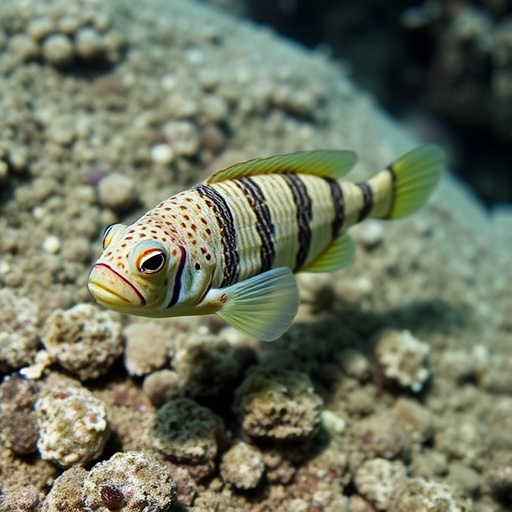The Mediterranean Sea, renowned for its biodiversity and complex ecosystems, has recently become the site of an intriguing discovery concerning hybridization among crustaceans. A groundbreaking study by Gil-Fernández, Falco, and Cuesta has marked the first recorded instances of hybrid Eriocheir specimens, belonging to the family Varunidae, within this ecologically significant marine environment. This revelation not only adds to the scientific understanding of crustacean taxonomy and evolution but also raises pertinent questions regarding the implications of hybridization in marine ecosystems.
Hybridization, a phenomenon that takes place when two distinct species interbreed, can serve various ecological and evolutionary functions. In the case of Eriocheir, known commonly as the Chinese mitten crab, the appearance of hybrids signifies not only a fascinating biological event but also a potentially transformative one for Mediterranean marine life. This discovery offers scientists an unprecedented opportunity to scrutinize the genetic outcomes of hybridization and how these might influence local biodiversity as well as population dynamics.
The Eriocheir genus has gained notoriety not only for its unique physical characteristics but also for its remarkable adaptability to various freshwater and brackish environments. Historically, this species has been recognized for its notable invasive nature in several regions, posing significant ecological challenges. The emergence of hybrid specimens may further complicate these dynamics, particularly as researchers unravel how new genotypes could affect both invasiveness and ecological interactions with native species.
Moreover, the Mediterranean Sea, already facing numerous environmental pressures such as climate change, overfishing, and pollution, might experience compounded effects as hybrid Eriocheir populations establish themselves. These hybrids could potentially introduce novel traits that enhance survival or reproduction in varied environmental scenarios, affecting native ecosystems in unpredictable ways. It is essential to explore how these hybrids interact with other marine species, including their potential role as competitors or predators.
A vital aspect of the study by Gil-Fernández et al. revolves around the methodology employed to identify these hybrids, which involved advanced genetic analysis and morphological assessments. These approaches enabled researchers to determine not only the existence of hybrids but also the extent of their genetic divergence from pure Eriocheir populations. This type of molecular investigation underscores the importance of integrating genetic tools into marine biological research as a means of resolving complex taxonomic questions.
The hybridization observed among Eriocheir specimens presents a unique model for studying evolutionary processes in a shifting ecological framework. As environments change, the potential for interspecific mating increases, raising questions about whether hybridization could serve as an adaptive mechanism, allowing species to cope with new challenges. By tracing the pathways of hybrid evolution, scientists can gain insights into the future adaptability of species experiencing environmental stressors.
This discovery sparks discussions in conservation biology as well. The intermingling of genetic material can lead to hybrid vigor, but it also raises concerns about genetic dilution of endemic species. Conservation strategies must now consider these hybrid populations and their ecological impact, necessitating a revision of existing frameworks for managing biodiversity in the Mediterranean. The broader implications for policy-making and the management of marine resources cannot be overstated.
The implications of finding hybrid Eriocheir go beyond mere curiosity; they reflect the underlying complexities of marine ecosystems. As these hybrid creatures likely interact with their environment in unforeseen ways, understanding their behavior and ecological roles will be crucial for scientists and ecological managers alike. This research opens a window into the future of crustacean diversity not just in the Mediterranean, but globally, as hybridization becomes an increasingly recognized element of evolutionary biology.
The study also raises crucial awareness about the need for ongoing monitoring of hybrid populations, particularly in light of climate change, which may further blur the lines between species. The researchers advocate for collaborative efforts in marine research to enhance the understanding of such hybrids, leading to improved predictive models for future biological interactions. By fostering interdisciplinary approaches that include genetics, ecology, and conservation strategies, scientists can better equip themselves to address the challenges posed by this emerging scientific field.
As the Mediterranean stands as a living laboratory for investigating ecological phenomena, the implications of hybridization among Eriocheir speculatively reflect the adaptive pathways of organisms responding to altered landscapes. Here, the convergence of scientific inquiry and ecological stewardship presents a pivotal opportunity to recalibrate management efforts in light of emerging biological realities.
Therefore, as the findings of Gil-Fernández and colleagues garner attention in scientific circles, they induce a collective reflection not only on the nature of hybridization but also on the strategies humanity must adopt to protect marine environments. The health of the Mediterranean and similar ecosystems hangs in the balance, and understanding the implications of hybridization is fundamental for preserving both biodiversity and ecological stability in the long run.
With ongoing research into the genetics and behaviors of hybrid populations, a clearer picture may soon emerge about how such blends will influence the ecological tapestry of the Mediterranean Sea. As the dialogue around hybridization continues to evolve, it stands as a testament to the dynamic nature of life, adaptation, and the compelling intricacies of evolutionary biology in action.
Subject of Research: Hybridization among Eriocheir specimens in the Mediterranean Sea
Article Title: First record of hybrid Eriocheir specimens (crustacea, decapoda, varunidae) in the Mediterranean sea.
Article References: Gil-Fernández, A., Falco, S. & Cuesta, J.A. First record of hybrid Eriocheir specimens (crustacea, decapoda, varunidae) in the Mediterranean sea. Discov Anim 2, 89 (2025). https://doi.org/10.1007/s44338-025-00141-3
Image Credits: AI Generated
DOI: https://doi.org/10.1007/s44338-025-00141-3
Keywords: Eriocheir, hybridization, Mediterranean Sea, crustaceans, biodiversity, genetic diversity, marine ecosystems.
Tags: Chinese mitten crab adaptationcrustacean taxonomy and evolutionecological challenges of EriocheirEriocheir hybrid discovery in Mediterraneangenetic outcomes of hybrid crustaceanshybridization in crustaceansimpact of hybrids on local biodiversityimplications of hybridization in ecosystemsinvasive species in Mediterranean Seamarine ecosystem transformationsMediterranean marine biodiversityVarunidae family of crabs





